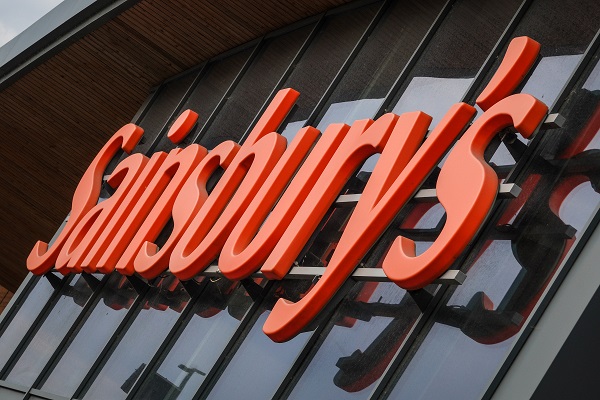Sainsbury's results welcomed but clouds gathering
These annual results have been well received in City circles, but the supermarket chain's profits could come under pressure if an industry price war breaks out. ii's head of markets runs through the numbers.
17th April 2025 08:21
by Richard Hunter from interactive investor

With the sector about to be embroiled in a trade war of its own, Sainsbury (J) (LSE:SBRY) is preparing for the fight with some added momentum which should provide some protection.
Given that in terms of market share, Sainsbury's and Asda are more closely linked with numbers of 15% and 12.5% respectively, it is perhaps Sainsbury's rather than Tesco who could be under most pressure. However, these full-year numbers are largely ahead of expectations, and Asda will have its work cut out if it is to upset the apple cart.
- Invest with ii: What is a Managed ISA? | Open a Managed ISA | Transfer an ISA
Sales of £31.56 billion were up by 3.1%, while underlying profit of £1.04 billion was 7.2% higher and marginally ahead of the expected £1.03 billion. Underlying profit was equally healthy, with the result of £761 million representing growth of 8.6% and comfortably ahead of the estimated £751 million.
With customers searching for perceived and actual value, the availability of the group’s Nectar scheme is also playing its part in increasing Sainsbury’s market share over the period and now extends to 9,000 products. Indeed, the company estimates that within three years, Nectar will provide incremental profit of £100 million which would be a significant bonus given the ferocity of competition which the sector attracts. Promisingly, the target is already ahead of schedule, with £39 million achieved in year one.
The group’s prodigious cash flow has enabled another increase to the dividend, giving a projected yield of almost 6% which is punchy by any standards. In addition, Sainsbury's has announced a further £200 million share buyback programme, and has also earmarked £250 million for the payment of a special dividend during the year as a result of the sale of its banking operation.
- Heavyweight investors switch from US stocks to gold and cash
- Fund Spotlight: 5% yield from undervalued UK firms
- eyeQ: global pharma stock fires bullish signal
Elsewhere, challenges remain. Quite apart from the impending cost pressures resulting from the Budget measures, which are expected to add £140 million of costs per annum, its non-food businesses are a mixed bag.
There had been warning signs over the last few months that the consumer is becoming increasingly selective in non-essential items which, coupled with other competitors specifically concentrated in this space, had somewhat left Sainsbury's trailing. While clothing sales grew by 2.9% over the period, General Merchandise fell by 2.8%, while Argos was unable to shake off a poor start to the year, resulting in a 2.7% fall in sales to £4.9 billion. There was a glimmer of hope as fourth-quarter sales rose by 1.9% following some intervention on the online offering from the group, and it remains to be seen whether this momentum can be maintained.
More broadly, supermarkets may be about to embark on a price war, and Asda’s aggressive assault on prices, if it fully happens, will likely shave profits across the sector. The clouds had been gathering as Tesco (LSE:TSCO) downgraded its recent profit guidance ahead of a potential cost challenge to come.
- Stockwatch: why I rate this exciting gold share a buy
- Five ways to make the best start to new tax year
- Sign up to our free newsletter for investment ideas, latest news and award-winning analysis
Unlike Tesco, however, Sainsbury's is guiding for the same level of underlying profit in the year to come, as well as an equally strong level of free cash flow in excess of £500 million. In addition, the group is well on track to achieve its target of £1 billion of cost savings by 2027, largely through investment in technology which will continue to streamline its operations.
The share price has suffered along with the sector as a whole and has fallen by 10% so far this year, leading to a decline of 3.5% over the last year as compared to a gain of 5.5% for the wider FTSE100. In addition, despite the progress, a relatively warm reception to the numbers and its undemanding valuation, Tesco remains the preferred play in the sector, with the market consensus for Sainsbury currently coming in at a hold, albeit a strong one.
These articles are provided for information purposes only. Occasionally, an opinion about whether to buy or sell a specific investment may be provided by third parties. The content is not intended to be a personal recommendation to buy or sell any financial instrument or product, or to adopt any investment strategy as it is not provided based on an assessment of your investing knowledge and experience, your financial situation or your investment objectives. The value of your investments, and the income derived from them, may go down as well as up. You may not get back all the money that you invest. The investments referred to in this article may not be suitable for all investors, and if in doubt, an investor should seek advice from a qualified investment adviser.
Full performance can be found on the company or index summary page on the interactive investor website. Simply click on the company's or index name highlighted in the article.